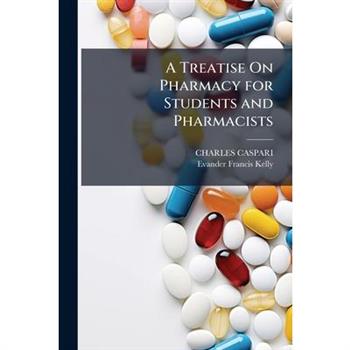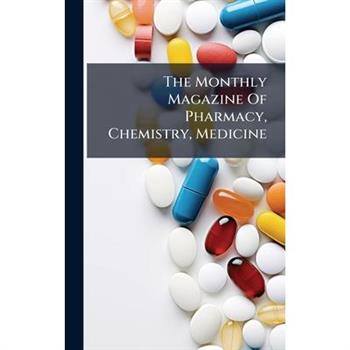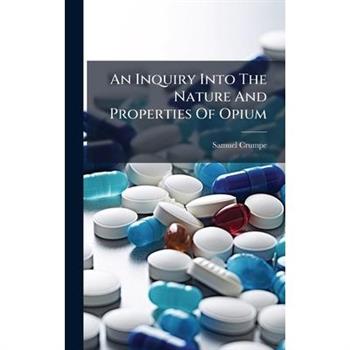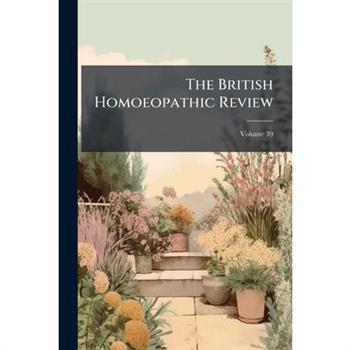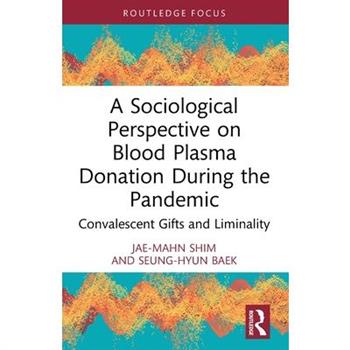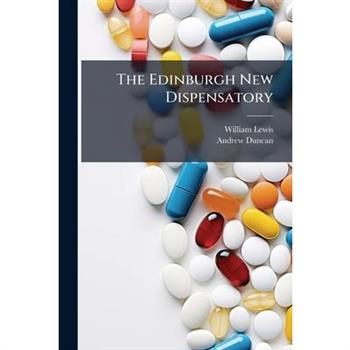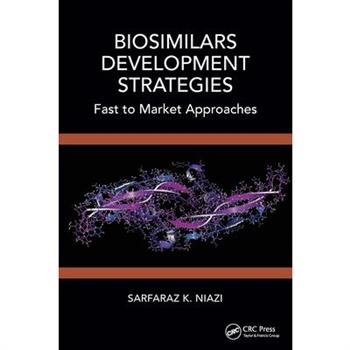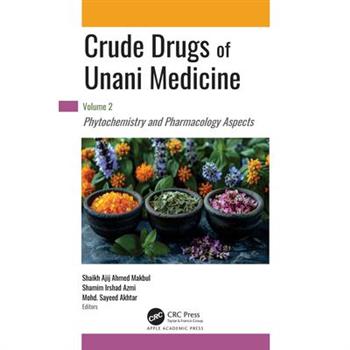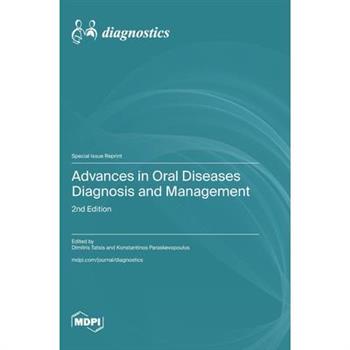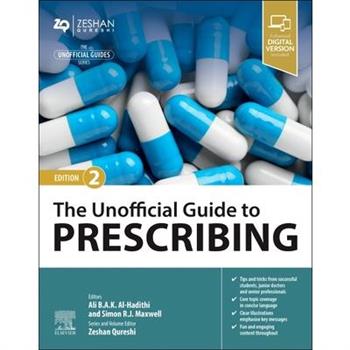Recent Advances in Therapeutic Strategies for the Treatment of Pediatric Diseases
The eight publications in this Special Issue focus on advancing therapeutic strategies specifically tailored to pediatric patients. Despite addressing a wide range of conditions (including fungal infections, cancer, spinal muscular atrophy, sleep-disordered breathing, and drug-induced cardiotoxicity), they share a common goal: to improve the safety, efficacy, and personalization of pediatric therapies. Several studies highlight the importance of appropriate dosing, formulation stability, and bioavailability (e.g., fluconazole, AmBisome(R), and temozolomide), emphasizing the challenges of adapting adult medications for children and the need for age-specific drug testing to minimize the risks associated with off-label prescribing. Gene therapy and precision medicine also emerge as key themes, showcasing innovative therapeutic approaches. Finally, the Special Issue reflects a clear shift toward patient-centered care, promoting safer drug delivery, improved monitoring (e.g., through cardiotoxicity biomarkers), and more evidence-based treatment protocols for children. Collectively, these studies underscore the critical need to design and validate pediatric therapies based on the unique physiological and developmental characteristics of this population.
Where Are We Now and Where Is Cell Therapy Headed?
This collection, titled "Where Are We Now and Where Is Cell Therapy Headed?", brings together original research and reviews that reflect the evolving landscape in cell therapy. It explores how traditional cell-based interventions are being redefined through advances in bioengineering, genome editing, and next-generation immunotherapies, including CAR-T and CAR-NK cells. The collection also examines the rise of cell-free approaches, such as the use of extracellular vesicles and secretomes.Key topics include the pivotal transition from autologous to allogeneic "off-the-shelf" products, strategies to improve standardization and scalability, and the integration of cell therapies with immunomodulatory agents. The contributions highlight cutting-edge applications in oncology, musculoskeletal repair, burn treatment, and retinal degeneration. This Reprint emphasizes the complementary roles of cellular and acellular therapies and the emerging view of cells as modular delivery platforms rather than simply structural components.By addressing both scientific advances and translational hurdles, this collection provides a timely and essential overview of where the field stands today and the challenges that lie ahead.
Dualistic Equilibrium in Neurotransmission and Beyond
How does the brain keep its chemical yin-yang balanced, and what happens when that homeostasis slips? This Reprint distills the Special Issue "Dualistic Equilibrium in Neurotransmission and Beyond: Unraveling the Pathophysiology and Unlocking Novel Therapeutic Targets in Neuropsychiatric Disorders" into a thematic tour of modern neurobiology. The opening editorial reframes depression, dementia and allied syndromes as failures of the excitation-inhibition handshake that spans synapse, glia, gut, and immune system. Eight peer-reviewed contributions then act as case studies of these balancing acts: resveratrol soft-modulates monoamine oxidase A; trace amine-associated receptors emerge as fast-acting antidepressant switches; cannabinoid-serotonin crosstalk times stress analgesia; orexin calibrates vigilance; developmental serotonin steers the gut-brain axis; network models expose schizophrenia symptom clusters; miR-200b-3p dampens neuroinflammation in ADHD; and plasma phospho-tau 217-231 forecasts cognitive decline. Each article pairs mechanistic depth with a translational horizon, from structure-guided drug design to multiplex biomarker panels ready for point-of-care testing. The collection also spotlights ethical dosing, sex-specific responses, and digital phenotyping, underscoring a precision-medicine future that treats circuits, not just chemicals. By weaving together pharmacology, multi-omics imaging, and patient-centric analytics, this Reprint offers a convergent neuropsychiatry roadmap that remains timely and actionable even after the submission portal has closed.
Thrive with Osteoporosis
Ayurveda for Her: A Gentle Guide to Hormonal Balance, Digestive Health, and Lasting VitalityFind your natural rhythm. Nourish your hormones. Embrace vibrant health-without the overwhelm.If you've ever felt exhausted by one-size-fits-all health advice, struggled to balance your hormones, soothe digestion, or calm stress in a sustainable way, this book offers a compassionate, practical alternative.Ayurveda for Her is written specifically for women navigating the realities of modern life. Whether you're experiencing PMS, fatigue, bloating, or the transitions of menopause, this accessible guide shows you how to create lasting wellness using the timeless wisdom of Ayurveda adapted for today's routines.Inside, you will discover: The core Ayurvedic principles every woman should knowA healing roadmap for 30 days of digestive and hormonal renewalNourishing, dosha-friendly recipes, from golden milk to khichari and balancing teasSimple self-care rituals (Dinacharya) that support gut health, skin, and mood in under 10 minutesSafe, effective use of Ayurvedic herbs such as ashwagandha and shatavariBreathwork, journaling, and mindfulness practices for emotional balanceReal-life stories of transformation to inspire and encourage youWhy this book is different: Clear, jargon-free guidance that makes Ayurveda approachable for beginnersGentle, sustainable practices designed to fit into busy schedulesFlexible strategies suitable for women in every stage of life-from early adulthood to menopauseA holistic approach that addresses body, mind, and spirit togetherAyurveda for Her offers more than theory-it provides actionable, nurturing practices that are both effective and easy to integrate. No strict rules. No guilt. Just supportive steps that help you feel more grounded, energized, and connected to your body.Even if Ayurveda is new to you, you'll feel guided and empowered to personalize your journey. From simple recipes and daily rituals to emotional self-care, this book encourages progress without pressure and helps you rediscover balance and vitality on your own terms.
Ayurveda for Her
Ayurveda for Her: A Gentle Guide to Hormonal Balance, Digestive Health, and Lasting VitalityFind your natural rhythm. Nourish your hormones. Embrace vibrant health-without the overwhelm.If you've ever felt drained by one-size-fits-all health advice, struggled with hormonal shifts, digestive discomfort, or stress, this book offers a compassionate alternative.Ayurveda for Her is a practical, supportive guide written specifically for women navigating real-life challenges. From PMS and fatigue to bloating and menopause, it blends ancient Ayurvedic wisdom with modern, sustainable routines that fit into busy lives.Inside, you will discover: The core Ayurvedic principles every woman should knowA healing roadmap for 30 days of digestive and hormonal renewalNourishing, dosha-friendly recipes-from golden milk to khichari and balancing teasSimple self-care rituals (Dinacharya) to support gut health, skin, and mood in under 10 minutesSafe, effective use of Ayurvedic herbs such as ashwagandha and shatavariBreathwork, journaling, and mindfulness practices for emotional balanceReal-life stories of women who found renewed energy and calm through AyurvedaWhy this book is different: Clear, jargon-free explanations of Ayurveda made accessible for beginnersGentle, sustainable practices that encourage progress without guilt or rigid rulesFlexible strategies that adapt to every stage of a woman's life-from early adulthood to menopauseA holistic approach that honours body, mind, and spirit equallyAyurveda for Her empowers women to reconnect with their inner wisdom, restore balance, and create simple daily rituals that support long-term health. You do not need to be an expert or adopt strict routines-small, intentional steps can bring profound change.Even if Ayurveda is new to you, this guide offers encouragement and practical tools to personalize your wellness journey. Whether you are seeking to ease symptoms, prevent imbalances, or cultivate greater energy and joy, these pages provide a trusted companion on your path to vitality.
Bone and Cartilage Conduction
Air conduction is the primary pathway for hearing sounds and is widely utilized in various hearing devices. In contrast, other forms of sound conduction-such as bone and cartilage conduction-have not been as commonly applied. However, recent advancements in device development have expanded the applications of these alternative conduction methods across various fields. This Special Issue addresses the mechanisms and practical uses of these methods.Since 2017, a new hearing device utilizing cartilage conduction has been developed and released in Japan. It has gained rapid popularity and is now recognized as one of the primary types of hearing device. Reflecting this trend, most of the contributions in this Special Issue focus on cartilage conduction and hearing aids, with studies submitted from various institutions in Japan.
Cannabis Grow Guide Book
���� Cannabis Grow Guide Book: Grow Top-Shelf Weed at Home-Step-by-Step Blueprint for Big Yields, Potent Buds, and Indoor/Outdoor SuccessWant to grow top-shelf cannabis in the comfort of your own home? Whether you're a total beginner or a seasoned cultivator, this complete cannabis grow guide gives you the exact blueprint for success.Inside, you'll learn how to grow potent, high-yielding plants indoors, outdoors, in soil, or with hydroponics. With clear instructions, pro grower tips, and troubleshooting strategies, this book is your ultimate reference for cultivating big harvests and premium-quality buds.���� What You'll Discover Inside: ✔️ Cannabis 101 - Learn the plant's life cycle, anatomy, and growth essentials.✔️ Choosing Your Grow Style - Indoor vs. outdoor setups, hydroponics, and soil growing.✔️ Essential Grow Equipment - Lights, fans, tents, and tools explained for every budget.✔️ Seeds & Strains - How to pick the best genetics for yield, flavor, and potency.✔️ Vegetative & Flowering Stages - Proven techniques for strong growth and dense buds.✔️ Harvesting Like a Pro - When and how to harvest for maximum potency.✔️ Drying & Curing - Preserve terpenes, flavor, and THC with expert methods.✔️ Troubleshooting Guide - Solve common problems like pests, mold, and nutrient issues.✔️ Advanced Techniques - Training, pruning, lighting hacks, and yield-boosting secrets.✔️ Legal & Sustainable Growing - Tips for compliance and eco-friendly cultivation.���� Why This Book Stands Out: Complete step-by-step guide from seed to harvest.Covers indoor, outdoor, soil, and hydroponics growing.Packed with pro secrets for boosting potency and yields.Beginner-friendly yet detailed enough for advanced growers.Whether you want to grow a few plants at home or master advanced techniques for huge harvests, this is your go-to cannabis grow bible.���� Perfect For Readers Searching: cannabis grow guide bookmarijuana grow book for beginnerscannabis grow bible step by stepcannabis growing book indoor outdoormarijuana cultivation book hydroponics soil���� Take control of your grow. Cultivate potent, flavorful, top-shelf buds at home.Get your copy of Cannabis Grow Guide Book today and start your journey to becoming a master grower!
A World without Measles and Rubella
Measles and rubella continue to affect children worldwide, even though effective, safe, and inexpensive vaccines have been available for over 50 years. Although measles immunization is estimated to have prevented over 56 million childhood deaths since the year 2000, the residual annual burden of 136,216 measles deaths and 32,000 children born with congenital rubella syndrome is unacceptable. Eliminating measles and rubella worldwide is technically feasible, and every WHO region has set measles and rubella elimination targets. However, without a global target, regions are struggling with achieving and then sustaining measles/rubella elimination. Global measles/rubella-containing vaccination coverage stagnated at around 85% for over a decade before declining to lower levels in many countries during the COVID-19 pandemic. Many planned supplemental immunization activities intended to fill the immunity gaps were postponed or canceled during the pandemic. Additionally, nineteen countries have yet to introduce rubella-containing vaccines despite the overwhelming evidence of disease and economic burden, as well as ethical considerations.
New Advances in Neurosurgery
Neurosurgery is a rapidly advancing field with many new technological developments and innovations. Image-guided surgery, intraoperative imaging and minimally invasive approaches have improved the safety and precision of surgical procedures. While endovascular methods expand, traditional microsurgery is still vital. Pediatric neurosurgery and TBI care face ongoing challenges, requiring specialized centers. This Issue explores some of the challenges that neurosurgery is facing in recent years. Personalized neurosurgery, integrating AI and tailored strategies, marks the future of the field.
State of the Art in Biomaterials for Drug Delivery
Nowadays, biomaterials are widely used in medicine and the medical care fields, playing increasingly important roles due to their unique structure and excellent performance. In particular, biomedical materials exhibit good biocompatibility and biodegradability, which allow for their design in drug delivery to the human body.Biomedical materials as anticancer drug carriers can be implemented in targeted drug delivery in the human body, improve the utilization rate of the cancer drug effects, and largely reduce the side effects of anticancer drugs on normal human body cell tissue. In addition, the drug carrier can also effectively improve the properties and stability of anticancer drugs in tissues, enhance the slow release of drugs, and reduce the lack of drug use in the body. Moreover, advancements in biomaterials have improved the safety and efficacy of diagnostic, therapeutic, and theranostic approaches for various diseases. The structures and interactions between biomaterials and drugs can influence the pesticide effect and have the potential to affect cellular physiology due to the close relationship between biological systems and biomaterial features. Drug delivery systems can also provide novel solutions by developing desirable and ideal materials to control the physicochemical, biological, structural, and mechanical microenvironments for successful drug delivery.This Special Issue focuses on biomaterials, including, but not limited to, natural materials, composite materials, functionalized nanomaterials, hydrogels, etc., for different drug delivery applications.
Fractal and Fractional Analysis in Biomedical Sciences and Engineering
Over the past two decades, various signal and image analyses, as well as bioinformatics approaches, have had a significant impact on research in life sciences. Problems arising in medical and biological research depend on a multitude of system parameters, often in a nonlinear way; these problems can often be successfully addressed via the tools of complex system analysis. Fractal and fractional analysis, originally rooted in theoretical developments, has later been recognized as well-suited for analyzing problems that occur in nature. Due to the random multiplicative processes in an organism, influencing growth, differentiation, and function, structures can be described in terms of scaled copies of self-similar entities. Machine learning and artificial intelligence are increasingly being employed in combination with fractional calculus.This Special Issue Reprint offers an overview of state-of-the-art developments in the field of fractal and fractional-based methodologies as applied to the analysis and modeling of biological entities. Eight out of ten articles directly target cutting-edge medical problems. It is highly multidisciplinary and is expected to be of interest to researchers from the health sector, life sciences, and applied mathematics, as well as to readers with different academic or practical backgrounds.
Healing Beyond Pills
Are you burned out by modern life, yet untouched by modern solutions? This transformative guide reveals the forgotten healing arts behind true, lasting relief from chronic stress. Blending Ayurvedic stress management, naturopathy for burnout, and Eastern healing therapies, this book invites you on a soul-deep journey one that goes far beyond surface-level fixes. Through powerful stories, somatic healing practices, breathwork rooted in neurobiology, and ritual medicine for stress, you ll discover how to listen to your body s quiet wisdom, align with your natural rhythms, and reclaim vitality without dependence on pills or quick hacks. This is not just a wellness manual it s a map back to yourself. Perfect for seekers of holistic stress relief, mind body transformation, and those longing for gentler, more grounded ways to heal, this book offers practical tools and profound insights for anyone who has ever felt overwhelmed, disconnected, or depleted. Whether you're new to somatic intelligence healing or looking to deepen your path, these teachings will stay with you long after the last page is turned.
Storytelling in Pharma Marketing
How do you make your message stand out in an industry driven by science and data? The answer lies in storytelling-the most powerful tool in a marketer's arsenal. Storytelling in Pharma Marketing unravels the art and science of crafting narratives that build trust, engage stakeholders, and drive meaningful action. Whether you're communicating with healthcare professionals, patients, caregivers, payers, or investors, this book provides a strategic blueprint to create compelling, ethical, and impactful stories that resonate. Discover the Science Behind Great Stories - Why do some messages stick while others fade? Learn the psychology and neuroscience of storytelling in pharma. - Master the Framework - A step-by-step guide to crafting narratives that align with your brand's purpose and values, tailored for multiple stakeholders. - Leverage AI & Emerging Technologies: Explore how AI, wearable tech, and immersive experiences like AR and VR are revolutionizing pharmaceutical storytelling. - Learn from the Best - Real-world case studies from pharma and beyond, revealing how the most successful brands have harnessed storytelling to create impact. - Navigate Ethical & Compliance Challenges - Striking the balance between compelling narratives and regulatory constraints in a highly regulated industry. In today's digital era, where information is abundant but attention is scarce, stories have the power to transform how pharmaceutical brands connect, educate, and inspire. This book is an essential resource for pharmaceutical marketers, brand managers, sales teams, and medical affairs professionals who want to harness storytelling to drive engagement and business success. Your brand has a story-make sure it's the one people remember.
Dietary Habits and Metabolic Health
"Dietary Habits and Metabolic Health" examines the interplay between nutritional practices and metabolic outcomes, focusing on emerging research across diverse dietary factors. Key areas of exploration include the metabolic consequences of altered nutrient profiles in processed foods, such as protein and lipid oxidation products, glycosylation derivatives, and microbial-driven nutrient modifications. It also investigates the role of probiotics and prebiotics in modulating gut microbiota, metabolic pathways, and physiological responses under varying dietary patterns. Additional topics encompass the metabolic effects of dietary practices like energy restriction, single-nutrient limitation, and intermittent fasting, as well as connections between diet, gut microbiota composition, and chronic disease risk. The issue further highlights personalized dietary interventions as a tool for metabolic regulation. By synthesizing evidence from food science, nutrition, and medicine, this Special Issue aims to deepen insights into how dietary behaviors influence metabolic health and inform strategies for disease prevention and management.
Education and Communication in Veterinary Clinical Practice
Effective communication is a hallmark of successful veterinary clinical practice. Communication underpins professionalism, establishes effective teamwork, and is essential to veterinary-client relationships. Teaching or developing effective communication is an increasingly important component of the 'hidden' curriculum for veterinary educators, introduced and reinforced throughout the teaching program. Effective communication is also a focus for prospective employers when considering a new graduate. Successful communication must also consider the rapidly changing modalities of how people communicate and, importantly, how important communication will be toward resilience in a highly stressful profession. This Special Issue highlights what is effective communication, how this can be 'taught', and its importance toward veterinary clinical practice.
Advanced Pharmaceutical Science and Technology in Israel
Israel has a significant and diverse history of ground-breaking research and development in pharmaceutical sciences and technology within academic settings, pharma/biopharma companies, and the biotech community. This Special Issue of Pharmaceutics, entitled "Advanced Pharmaceutical Science and Technology in Israel", was put together to highlight the exceptional achievements and significant international impact of pharmaceutical research performed in Israel in celebration of the country's 75th diamond anniversary of growth and prosperity. Naturally, the articles in this reprint represent only a small fraction of the ground-breaking pharmaceutical research and development taking place in Israel. That being said, this collection of articles does serve as a unique example of the outstanding and diverse contributions Israel has made to the global pharmaceutical arena. The Special Issue covers many hot topics in the pharmaceutical sciences, including gene therapy, cell-based therapy, nanomedicine, new drug delivery systems, 3D printing, space medicine, personalized medicine, and advanced PBPK modeling. We hope that this Special Issue will contribute to multidisciplinary discussions on these exciting topics and prompt new scientific collaborations, further advancing pharmaceutical sciences and engineering in Israel and globally. Looking to the future, Israel will undoubtedly continue to be a significant pioneer in the global pharmaceutical science and technology arenas.
Metabolic Features and Nutritional Interventions in Chronic Diseases
A growing body of research indicates an extensive metabolic dysfunction in a spectrum of chronic diseases, comprising aging, cancer, and diseases affecting the cardiovascular system, liver, and kidneys. The phenotypes associated with metabolic dysfunction vary depending on disease type and stage. In turn, the altered metabolism drives disease pathology. Consequently, the nutritional modulation of metabolic status in chronic disease is widely acknowledged to reduce disease incidence. For instance, tailored nutritional intervention in cancers with altered metabolism determines the improved therapeutic responses. Additionally, counteracting muscle loss and osteoporosis are clinical goals of nutritional support in an aged population. Mechanistically, bioactive nutrients or tailored nutritional regimen modulate metabolism through mitochondrial homeostasis, immuno-regulation, as well as epigenome regulation to impact disease progression. This reprint aims to be an interdisciplinary platform that covers (1) characterization of metabolic features and/or nutritional requirement in a certain type of chronic disease; (2) defining the effects and mechanism of a specific nutrient or nutritional intervention on metabolism; (3) development of new nutritional strategy that improves disease outcome by altering metabolism.
Morphofunctional Nutritional Assessment in Clinical Practice
The diagnosis of malnutrition is difficult because it does not depend only on weight at a given time, but also on its evolution and the underlying pathological situations. Therefore, the clinical use of body composition measurements is essential for adequate assessment of this malnutrition, especially in the evaluation of muscle mass and function. In this context, nutritional assessment can no longer be based on the determination of classical anthropometric measurements. The concept of morphofunctional nutritional assessment postulates that the diagnosis and monitoring of nutritional status must be carried out using techniques and biomarkers that determine the evaluation of intake, anthropometry, body composition, muscle strength, and function that include techniques such as bioelectrical impedance analysis or nutritional ultrasound, and new biological parameters too. This Special Issue aims to show the implementation of this new concept of nutritional evaluation in the management of patients and in clinical research in nutrition.
Antimicrobial Activity of Natural Products and Plants Extracts
This reprint includes high-quality studies highlighting the complex antimicrobial potential of products derived from natural sources (NPs). The nine articles published in the Special Issue entitled "Antimicrobial Activity of Natural Products and Plants Extracts, 1st Edition" in the journal Antibiotics present scientific data regarding the ability of selected natural products (essential oils, gemmotherapy extracts, solvent extracts, isolated compounds) to inhibit relevant human and veterinary organisms (reference strains, multidrug resistant strains, ESKAPE Pathogens groups, etc.), as well as against bacterial and fungal strains specific to cereals. Interesting results on synergistic associations with antibiotics are reported as well. Furthermore, these studies offer insights into the NPs' chemical-profile-based standardization and multifaced biological properties-antioxidant, hepatoprotective, and cytotoxic-thus demonstrating the need for multidisciplinary studies.
Ecotoxicity and Herbal Health
Overviews environmental contaminants affect on plant-based remedies and, consequently, human health. Addresses several key areas of concern. It covers ecotoxicological impact on medicinal plants, human health implications, sustainable practices and remediation, regulatory framework and policy.
Pharmaceutical Stability & Stability Testing
Being foreword by Professor Abubakr O. Nur, University of Khartoum, this book combines the theoretical background of dosage form degradation and stability problems together with practical procedures to perform various types of stability studies. It describes the probable physical changes, the chemical kinetics of degradation reactions that may take place and the microbiological spoilage. It considers the influence of different factors on the stability of pharmaceuticals and their impact on the shelf life with emphasis on the effect of temperature taking in account the concept of the mean kinetic temperature and its calculation. The international regulatory guidelines together with the dosage form requirements and specifications and how to estimate or predict the shelf life with practical examples. This book is a valuable guide to students where they can found model question and answers, researchers and professionals of industrial pharmacy.
The Drug Book
"The Drug Book," edited by Charles Austin Bates, offers a fascinating glimpse into the world of pharmaceuticals and their social impact at the close of the 19th century. This historical work provides insights into the drugs, medicines, and remedies available during that era, reflecting the state of medical knowledge and practice.Explore the remedies and societal perceptions of various substances in an age before modern regulation and scientific advancements transformed the pharmaceutical landscape. This volume serves as a valuable resource for understanding the historical context of drug use and its evolving role in society.This work has been selected by scholars as being culturally important, and is part of the knowledge base of civilization as we know it. This work was reproduced from the original artifact, and remains as true to the original work as possible. Therefore, you will see the original copyright references, library stamps (as most of these works have been housed in our most important libraries around the world), and other notations in the work.This work is in the public domain in the United States of America, and possibly other nations. Within the United States, you may freely copy and distribute this work, as no entity (individual or corporate) has a copyright on the body of the work.As a reproduction of a historical artifact, this work may contain missing or blurred pages, poor pictures, errant marks, etc. Scholars believe, and we concur, that this work is important enough to be preserved, reproduced, and made generally available to the public. We appreciate your support of the preservation process, and thank you for being an important part of keeping this knowledge alive and relevant.
An Inquiry Into The Nature And Properties Of Opium
"An Inquiry Into The Nature And Properties Of Opium" delves into the historical understanding of opium, its properties, and its effects. Written by Samuel Crumpe, this work provides a detailed examination of opium's uses and impacts during its time. The book explores the chemical composition of opium, its medicinal applications, and the various methods of preparation and administration.Crumpe's inquiry offers valuable insights into the scientific and medical perspectives on opium prevalent in the 18th century. It serves as a historical record of the early investigations into one of the world's most potent and controversial substances.This work has been selected by scholars as being culturally important, and is part of the knowledge base of civilization as we know it. This work was reproduced from the original artifact, and remains as true to the original work as possible. Therefore, you will see the original copyright references, library stamps (as most of these works have been housed in our most important libraries around the world), and other notations in the work.This work is in the public domain in the United States of America, and possibly other nations. Within the United States, you may freely copy and distribute this work, as no entity (individual or corporate) has a copyright on the body of the work.As a reproduction of a historical artifact, this work may contain missing or blurred pages, poor pictures, errant marks, etc. Scholars believe, and we concur, that this work is important enough to be preserved, reproduced, and made generally available to the public. We appreciate your support of the preservation process, and thank you for being an important part of keeping this knowledge alive and relevant.
Effect of Nutrition on Maternal Health, Fetal Development and Perinatal Outcomes
It is evident that a multitude of lifestyle factors exert a considerable influence on the wellbeing of pregnant women and their foetuses. Of these factors, dietary behaviour is of particular significance. Despite the increased requirements for certain nutrients, such as iron and folic acid, during pregnancy, the fundamental principles of healthy eating remain consistent with those of the general population. A substantial body of research has established that an inadequate nutritional intake during pregnancy exerts a detrimental effect on perinatal outcomes, including complications during childbirth and suboptimal foetal development. Furthermore, this inadequate intake poses risks to the long-term health of the offspring. It is imperative to ensure an adequate intake of energy, protein, vitamins, and minerals in order to satisfy the needs of both the mother and the foetus.The developmental origin of health and disease (DOHaD) model hypothesises that the intrauterine environment can induce epigenetic modifications and alter gene expression patterns in the foetus. These alterations have the potential to render neonates and children susceptible to a range of diseases later in life. The formulation of national and international nutritional guidelines is meticulous, informed by robust evidence regarding the benefits of adequate nutrient consumption and the risks associated with deficiencies.
Crude Drugs of Unani Medicine
Provides understanding and application of Unani medicine as cure, rehabilitation, and promotion of human well-being. Explores the theoretical and practical aspects of potential medicinal plants and their bioactive compounds to combat chronic ailments. Focuses on pharmacology and phytochemistry of medicinal plants and animal-derived drugs.
Practical Guide to Clinical Data Management
A Practical Guide to Clinical Data Management, Fourth Edition provides a comprehensive overview of the tasks involved in clinical data management and the computer systems used to perform those tasks.
Pharmacological Aspects of Essential Oils
This book focuses on the property of essential oil and discusses competency of essential oil in treating disorders like diabetes, insomnia, depression, nausea, anxiety, and stress and other practical topics obligatory for the development of essential oils industry.
The Monthly Magazine Of Pharmacy, Chemistry, Medicine
"The Monthly Magazine Of Pharmacy, Chemistry, Medicine" offers a fascinating glimpse into the state of medical and pharmaceutical knowledge during the 19th century. This historical periodical provides a detailed record of chemical discoveries, pharmaceutical practices, and medical advancements as they were understood at the time. Readers will find a wealth of information on the substances and techniques used in medicine, alongside discussions of contemporary scientific theories and debates. This magazine serves as an invaluable resource for historians of science and medicine, as well as anyone interested in the evolution of these fields.This work has been selected by scholars as being culturally important, and is part of the knowledge base of civilization as we know it. This work was reproduced from the original artifact, and remains as true to the original work as possible. Therefore, you will see the original copyright references, library stamps (as most of these works have been housed in our most important libraries around the world), and other notations in the work.This work is in the public domain in the United States of America, and possibly other nations. Within the United States, you may freely copy and distribute this work, as no entity (individual or corporate) has a copyright on the body of the work.As a reproduction of a historical artifact, this work may contain missing or blurred pages, poor pictures, errant marks, etc. Scholars believe, and we concur, that this work is important enough to be preserved, reproduced, and made generally available to the public. We appreciate your support of the preservation process, and thank you for being an important part of keeping this knowledge alive and relevant.
Pharmacopoeia Officinalis [et] Extemporanea
"Pharmacopoeia Officinalis et Extemporanea: Or, A Complete English Dispensatory, In Two Parts. Theoretic And Practical" by John Quincy offers a comprehensive overview of pharmaceutical knowledge during its time. This historic text provides insights into the medications, preparations, and treatments that were commonly used. The book is divided into two parts, offering both the theoretical underpinnings and practical applications of pharmaceutical practices. It serves as a valuable resource for understanding the evolution of medicine and the role of the apothecary in past societies.This work has been selected by scholars as being culturally important, and is part of the knowledge base of civilization as we know it. This work was reproduced from the original artifact, and remains as true to the original work as possible. Therefore, you will see the original copyright references, library stamps (as most of these works have been housed in our most important libraries around the world), and other notations in the work.This work is in the public domain in the United States of America, and possibly other nations. Within the United States, you may freely copy and distribute this work, as no entity (individual or corporate) has a copyright on the body of the work.As a reproduction of a historical artifact, this work may contain missing or blurred pages, poor pictures, errant marks, etc. Scholars believe, and we concur, that this work is important enough to be preserved, reproduced, and made generally available to the public. We appreciate your support of the preservation process, and thank you for being an important part of keeping this knowledge alive and relevant.
A Treatise On Pharmacy for Students and Pharmacists
"A Treatise On Pharmacy for Students and Pharmacists" by Charles Caspari and Evander Francis Kelly, originally published in 1920, stands as a comprehensive guide to the principles and practices of pharmacy. Designed for both students embarking on their pharmaceutical education and practicing pharmacists seeking to enhance their knowledge, this treatise covers a wide array of topics essential to the field. From the fundamental concepts of pharmaceutical science to the intricacies of drug preparation and compounding, the book provides detailed explanations and practical insights. It delves into the chemical properties of medicinal compounds, exploring their interactions and effects within the human body. This historical text offers a valuable glimpse into the state of pharmaceutical knowledge at the turn of the century, making it an indispensable resource for anyone interested in the history of medicine and pharmacy.This work has been selected by scholars as being culturally important, and is part of the knowledge base of civilization as we know it. This work was reproduced from the original artifact, and remains as true to the original work as possible. Therefore, you will see the original copyright references, library stamps (as most of these works have been housed in our most important libraries around the world), and other notations in the work.This work is in the public domain in the United States of America, and possibly other nations. Within the United States, you may freely copy and distribute this work, as no entity (individual or corporate) has a copyright on the body of the work.As a reproduction of a historical artifact, this work may contain missing or blurred pages, poor pictures, errant marks, etc. Scholars believe, and we concur, that this work is important enough to be preserved, reproduced, and made generally available to the public. We appreciate your support of the preservation process, and thank you for being an important part of keeping this knowledge alive and relevant.
The Monthly Magazine Of Pharmacy, Chemistry, Medicine
"The Monthly Magazine Of Pharmacy, Chemistry, Medicine" offers a fascinating glimpse into the state of medical and pharmaceutical knowledge during the 19th century. This historical periodical provides a detailed record of chemical discoveries, pharmaceutical practices, and medical advancements as they were understood at the time. Readers will find a wealth of information on the substances and techniques used in medicine, alongside discussions of contemporary scientific theories and debates. This magazine serves as an invaluable resource for historians of science and medicine, as well as anyone interested in the evolution of these fields.This work has been selected by scholars as being culturally important, and is part of the knowledge base of civilization as we know it. This work was reproduced from the original artifact, and remains as true to the original work as possible. Therefore, you will see the original copyright references, library stamps (as most of these works have been housed in our most important libraries around the world), and other notations in the work.This work is in the public domain in the United States of America, and possibly other nations. Within the United States, you may freely copy and distribute this work, as no entity (individual or corporate) has a copyright on the body of the work.As a reproduction of a historical artifact, this work may contain missing or blurred pages, poor pictures, errant marks, etc. Scholars believe, and we concur, that this work is important enough to be preserved, reproduced, and made generally available to the public. We appreciate your support of the preservation process, and thank you for being an important part of keeping this knowledge alive and relevant.
An Inquiry Into The Nature And Properties Of Opium
"An Inquiry Into The Nature And Properties Of Opium" delves into the historical understanding of opium, its properties, and its effects. Written by Samuel Crumpe, this work provides a detailed examination of opium's uses and impacts during its time. The book explores the chemical composition of opium, its medicinal applications, and the various methods of preparation and administration.Crumpe's inquiry offers valuable insights into the scientific and medical perspectives on opium prevalent in the 18th century. It serves as a historical record of the early investigations into one of the world's most potent and controversial substances.This work has been selected by scholars as being culturally important, and is part of the knowledge base of civilization as we know it. This work was reproduced from the original artifact, and remains as true to the original work as possible. Therefore, you will see the original copyright references, library stamps (as most of these works have been housed in our most important libraries around the world), and other notations in the work.This work is in the public domain in the United States of America, and possibly other nations. Within the United States, you may freely copy and distribute this work, as no entity (individual or corporate) has a copyright on the body of the work.As a reproduction of a historical artifact, this work may contain missing or blurred pages, poor pictures, errant marks, etc. Scholars believe, and we concur, that this work is important enough to be preserved, reproduced, and made generally available to the public. We appreciate your support of the preservation process, and thank you for being an important part of keeping this knowledge alive and relevant.
The British Homoeopathic Review
"The British Homoeopathic Review, Volume 39" offers a detailed look into the world of homeopathic medicine as it was practiced and understood in the late 19th century. This volume presents a collection of articles, case studies, and discussions relevant to homeopathic practitioners and those interested in alternative medical treatments. Providing insights into the historical context of homeopathy, the book showcases the theories, methodologies, and clinical applications that defined the field during this period. Readers will find valuable information about the remedies used, the diagnostic approaches employed, and the debates within the homeopathic community. This work serves as an important resource for understanding the evolution of homeopathy and its place within the broader landscape of medical history.This work has been selected by scholars as being culturally important, and is part of the knowledge base of civilization as we know it. This work was reproduced from the original artifact, and remains as true to the original work as possible. Therefore, you will see the original copyright references, library stamps (as most of these works have been housed in our most important libraries around the world), and other notations in the work.This work is in the public domain in the United States of America, and possibly other nations. Within the United States, you may freely copy and distribute this work, as no entity (individual or corporate) has a copyright on the body of the work.As a reproduction of a historical artifact, this work may contain missing or blurred pages, poor pictures, errant marks, etc. Scholars believe, and we concur, that this work is important enough to be preserved, reproduced, and made generally available to the public. We appreciate your support of the preservation process, and thank you for being an important part of keeping this knowledge alive and relevant.
A Sociological Perspective on Blood Plasma Donation During the Pandemic
Shim and Baek examine the evolving existential meanings of gift-making by interviewing donors of convalescent blood plasma during the Covid-19 pandemic.
The Edinburgh New Dispensatory
"The Edinburgh New Dispensatory," published in 1804, stands as a comprehensive guide to pharmaceutical knowledge at the turn of the 19th century. This meticulously detailed volume includes complete and accurate translations of the London and Dublin Pharmacopoeias, offering invaluable insights into the era's medicinal practices. Authored by William Lewis and Andrew Duncan, this dispensatory reflects the evolving understanding of drugs, preparations, and their uses in medical treatment. A significant historical document, "The Edinburgh New Dispensatory" provides a window into the past for historians of medicine, pharmacy professionals, and anyone interested in the development of medical science. Its detailed entries and systematic organization make it an enduring resource for understanding the foundations of modern pharmacology.This work has been selected by scholars as being culturally important, and is part of the knowledge base of civilization as we know it. This work was reproduced from the original artifact, and remains as true to the original work as possible. Therefore, you will see the original copyright references, library stamps (as most of these works have been housed in our most important libraries around the world), and other notations in the work.This work is in the public domain in the United States of America, and possibly other nations. Within the United States, you may freely copy and distribute this work, as no entity (individual or corporate) has a copyright on the body of the work.As a reproduction of a historical artifact, this work may contain missing or blurred pages, poor pictures, errant marks, etc. Scholars believe, and we concur, that this work is important enough to be preserved, reproduced, and made generally available to the public. We appreciate your support of the preservation process, and thank you for being an important part of keeping this knowledge alive and relevant.
Biosimilars Development Strategies
Provides an update on the status of biosimilars and a perspective for the next decade. How biosimilars are developed in the future will include many AI-based features to establish structural similarity that will prevent the need for most other testing, including detailed analytical assessment and clinical pharmacology testing.
Crude Drugs of Unani Medicine
Details pharmacology, phytochemistry, and pharmacovigilance of medicinal plants used in Unani system of medicine. Studies utilization of potential therapeutic agents as standardized extracts, in conjunction with other herbs or as isolated bioactive constituents.
Surprised by Nothing
Kathryn Kyker used to faint at the sight of blood. But after three decades as an ER social worker, blood no longer fazed her-and neither did anything else.Kathryn took her job at a regional Georgia hospital because she was desperate for health insurance. Although she found the work meaningful and became the hospital's first ER social work manager, the high-stakes environment left her unable to cry, hypervigilant about safety, and detached from family and friends.With her inner emotional landscape sabotaged, Kathryn set out on a quest to regain her relationship with curiosity, joy, and the bonds that make us human. The result is a reflective interrogation of the US health care system, a meditation on social work, and a thoughtful inquiry into the emotional responsibilities we have to ourselves-and one another.Full of compassion and humorous insight, Surprised by Nothing is a compelling reminder of how to live a creative and nurturing life, even in the face of the world's random, devastating hardships.A portion of this book's proceeds will be donated to Project HOPE, which supports health care workers and improves access to care around the world.
Surprised by Nothing
Kathryn Kyker used to faint at the sight of blood. But after three decades as an ER social worker, blood no longer fazed her-and neither did anything else.Kathryn took her job at a regional Georgia hospital because she was desperate for health insurance. Although she found the work meaningful and became the hospital's first ER social work manager, the high-stakes environment left her unable to cry, hypervigilant about safety, and detached from family and friends.With her inner emotional landscape sabotaged, Kathryn set out on a quest to regain her relationship with curiosity, joy, and the bonds that make us human. The result is a reflective interrogation of the US health care system, a meditation on social work, and a thoughtful inquiry into the emotional responsibilities we have to ourselves-and one another.Full of compassion and humorous insight, Surprised by Nothing is a compelling reminder of how to live a creative and nurturing life, even in the face of the world's random, devastating hardships.A portion of this book's proceeds will be donated to Project HOPE, which supports health care workers and improves access to care around the world.
Advances in Oral Diseases Diagnosis and Management
The Special Issue "Advances in Oral Diseases Diagnosis and Management: 2nd Edition", published in Diagnostics (ISSN 2075-4418) under the section "Pathology and Molecular Diagnostics," presents a comprehensive collection of research advancing the diagnosis and management of oral diseases. Edited by Dr. Dimitris Tatsis and Dr. Konstantinos Paraskevopoulos from the Aristotle University of Thessaloniki, Greece, this issue addresses critical public health challenges posed by oral conditions, including oral potentially malignant disorders, oral cancer, autoimmune disorders, infections, temporomandibular joint disorders, osteomyelitis, and medication-related osteonecrosis of the jaws. Featuring 15 peer-reviewed papers, this Special Issue encompasses a wide spectrum of head and neck pathologies. Key contributions explore innovative diagnostic tools such as mucoscopy, bioimpedance, and optical coherence tomography, alongside histopathological and clinical analyses of conditions like oral lichen planus, leukoplakia, and peri-implantitis. The research highlights interdisciplinary approaches, integrating molecular biology, genetics, and microbiology, emphasizing early detection, personalized treatment, and patient-centered care to improve oral and systemic health outcomes.
The Unofficial Guide to Prescribing
Part of the unique and award-winning The Unofficial Guides series, a collaboration between senior students, junior doctors and specialty experts. This combination of contributors understands what is essential to excel on your course, in exams and in practice - as well as the importance of presenting information in a clear, fun and engaging way. Packed with hints and tips from those in the know, when you are in a hurry and need a study companion you can trust, reach for an Unofficial Guide. The Unofficial Guide to Prescribing provides detailed steps on patient assessment, investigation, and management, with an emphasis on prescription procedures. Through clinical scenarios, this work provides the necessary skills to excel in handling emergencies and complex prescribing. Prescribing errors have significant health implications for patients and financial implications for healthcare systems, costing millions annually. As such, early prescribing training has become a crucial necessity in medical education and is now an integral part of teaching and assessment. Each scenario is presented as you would see it in the hospital setting and covers: Initial step-by-step assessment of the patient: how to assess, assessment findings, and immediate managementInitial investigationsInitial managementReassessmentTreatmentHanding over the patientNew section on electronic prescribing and fluid prescribingDrug charts throughout to fill in with model answersCore theory around prescribing alongside practical applicationPrescribing taught alongside clinical managementAn enhanced eBook version is included with purchase. The eBook allows you to access all the text, figures and references, with the ability to search, customise your content, make notes and highlights, and have content read aloud




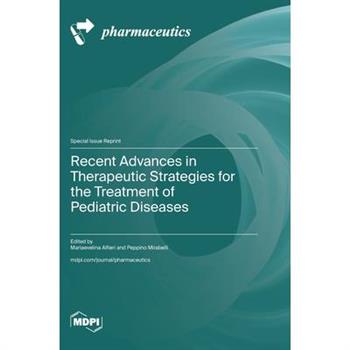



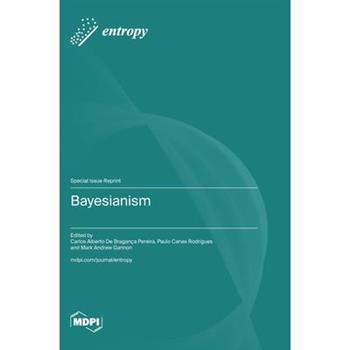
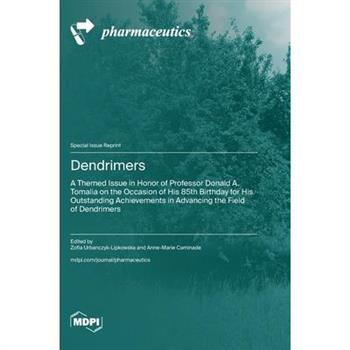
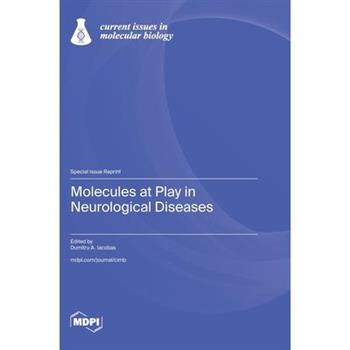
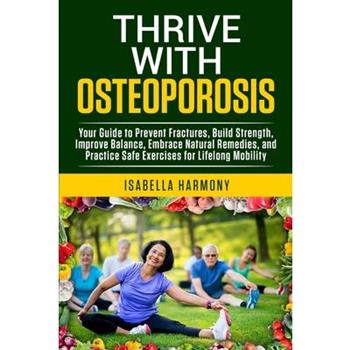

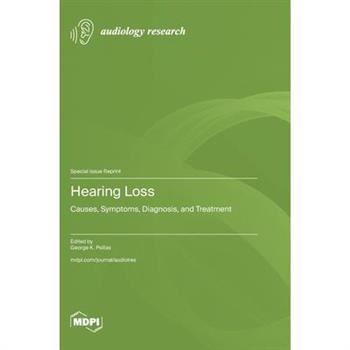
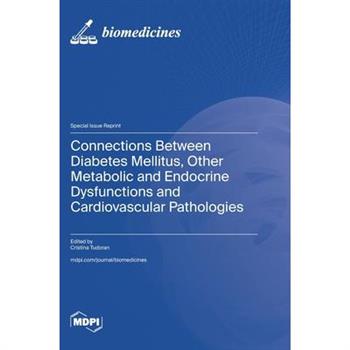
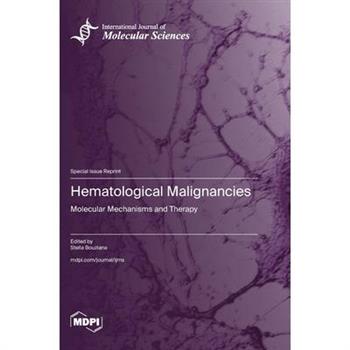

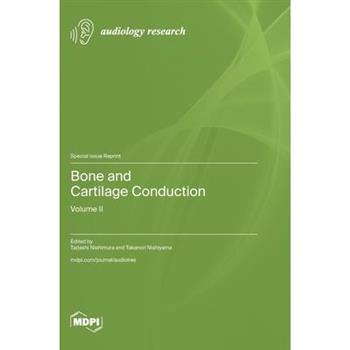
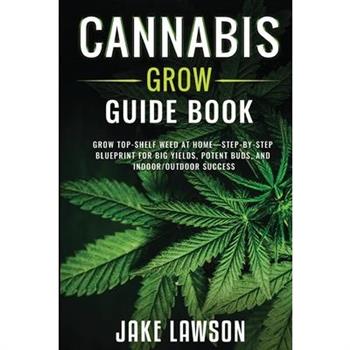

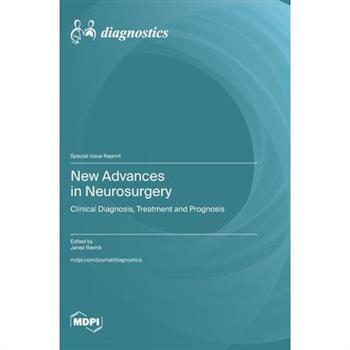
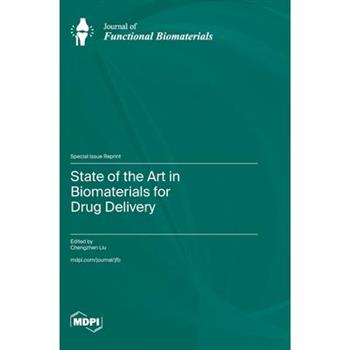


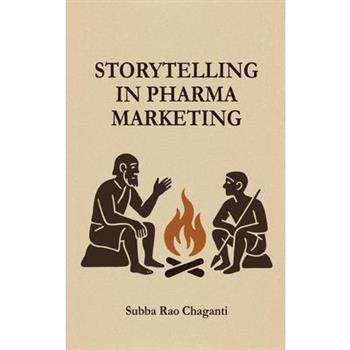
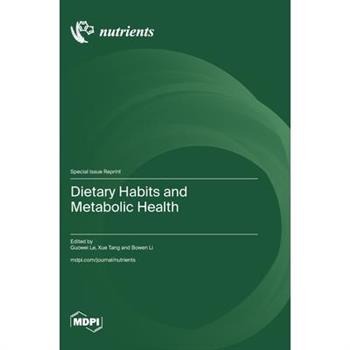
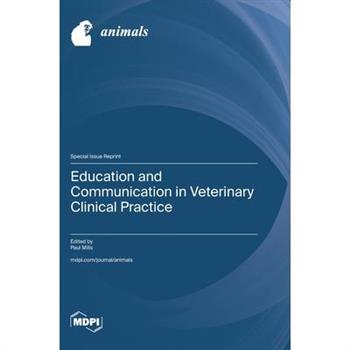

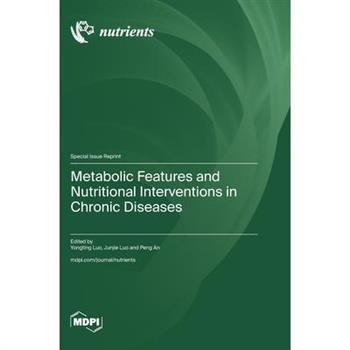
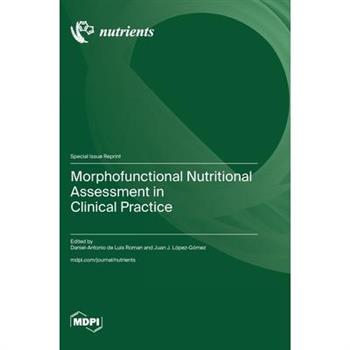
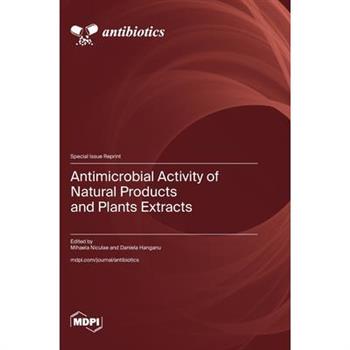

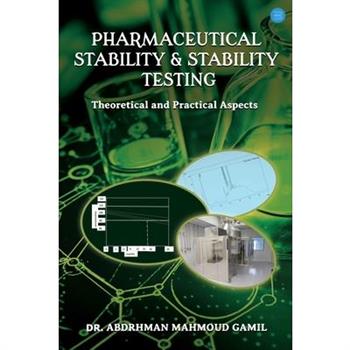
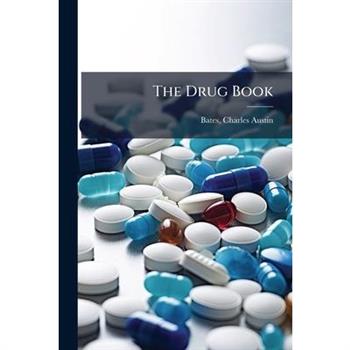
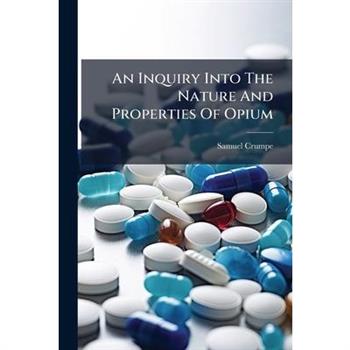
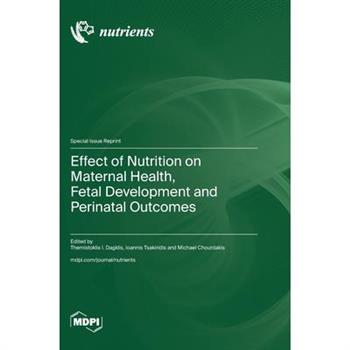

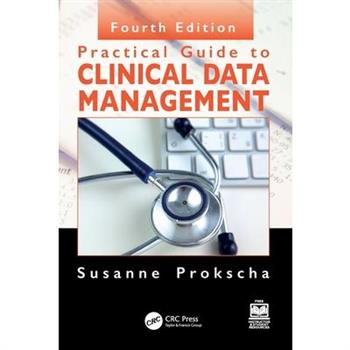
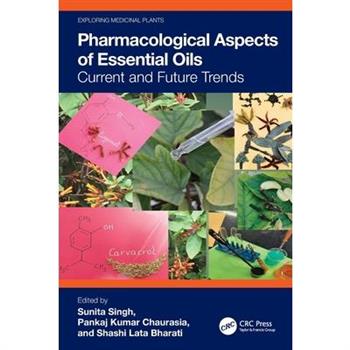
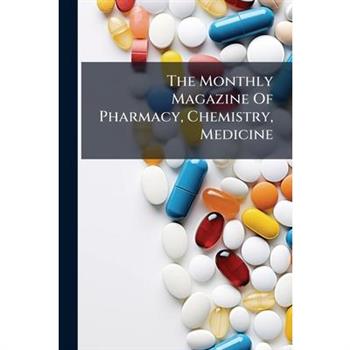
![Pharmacopoeia Officinalis [et] Extemporanea Pharmacopoeia Officinalis [et] Extemporanea](https://cdn.kingstone.com.tw/english/images/product/0886/9781024320886m.jpg?Q=cc709)
